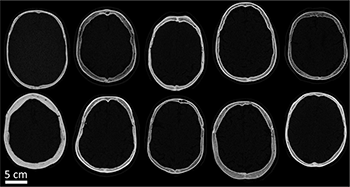Treatment planning is an important aspect of transcranial focused ultrasound procedures, and the capability to predict patient-specific heating of a target is not currently available clinically.

An accurate treatment simulation capability could be used to predict the success of using the technology for patients with essential tremor or for clinical trials in neuromodulation or opening the blood-brain barrier. Kim Butts Pauly, PhD, and colleagues at Stanford University sought to develop and test a novel simulation system that could predict focal spot heating and other characteristics based on the parameters used during focused ultrasound treatments. Could their rapid 3D numeric simulation framework help the field move toward precision medicine wherein treatments are calibrated more accurately for each individual patient, treatment workflow is made more efficient, and clinical outcome can be predicted?
See Nature Scientific Reports: A Rapid Beam Simulation Framework for Transcranial Focused Ultrasound >
